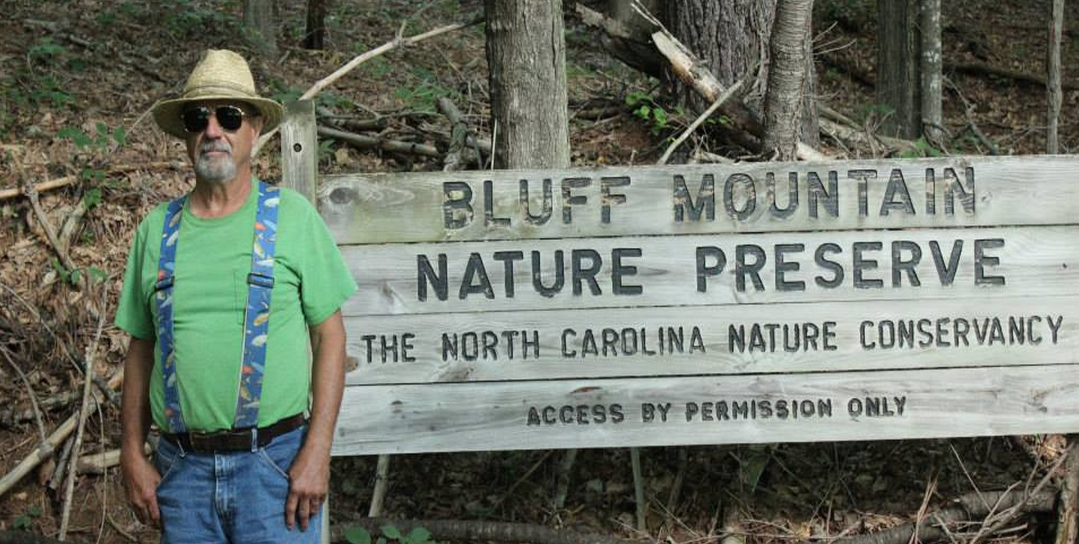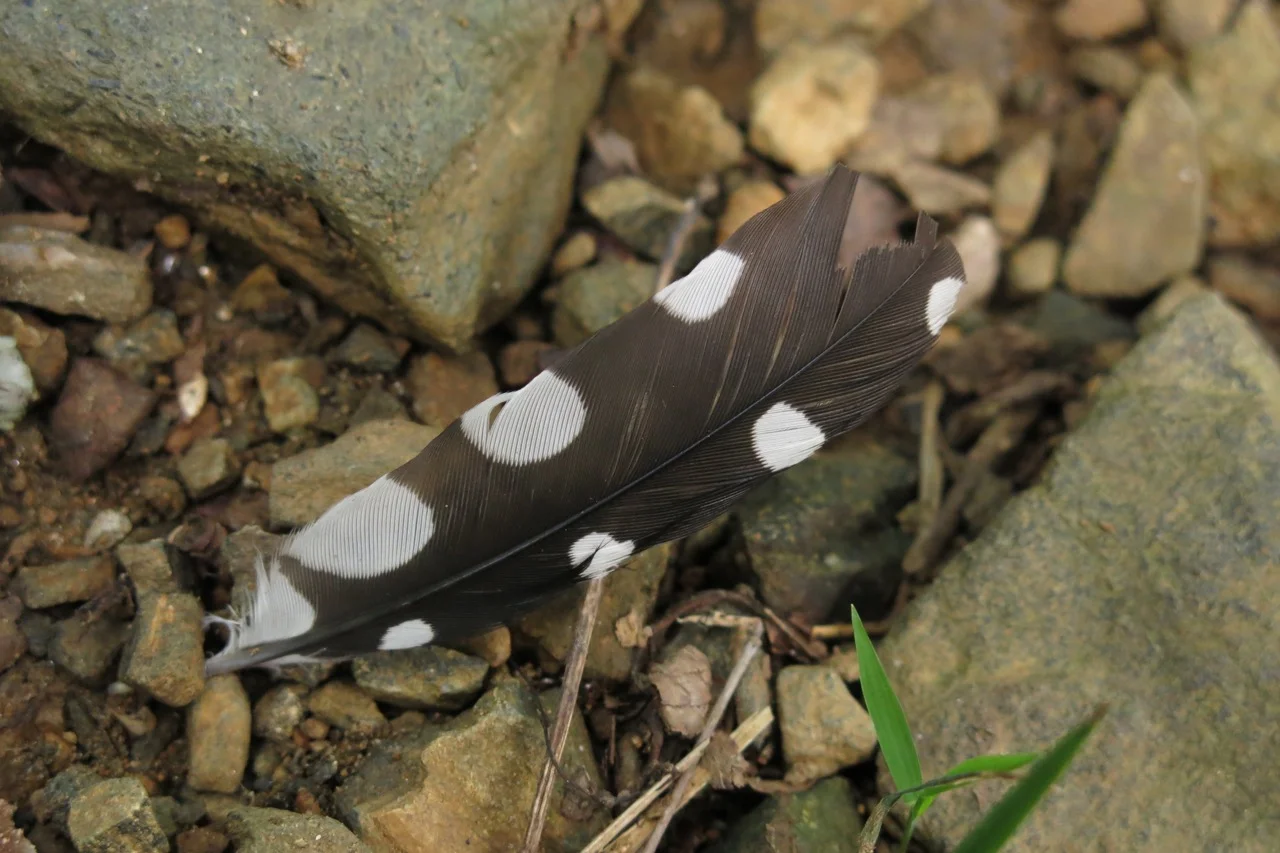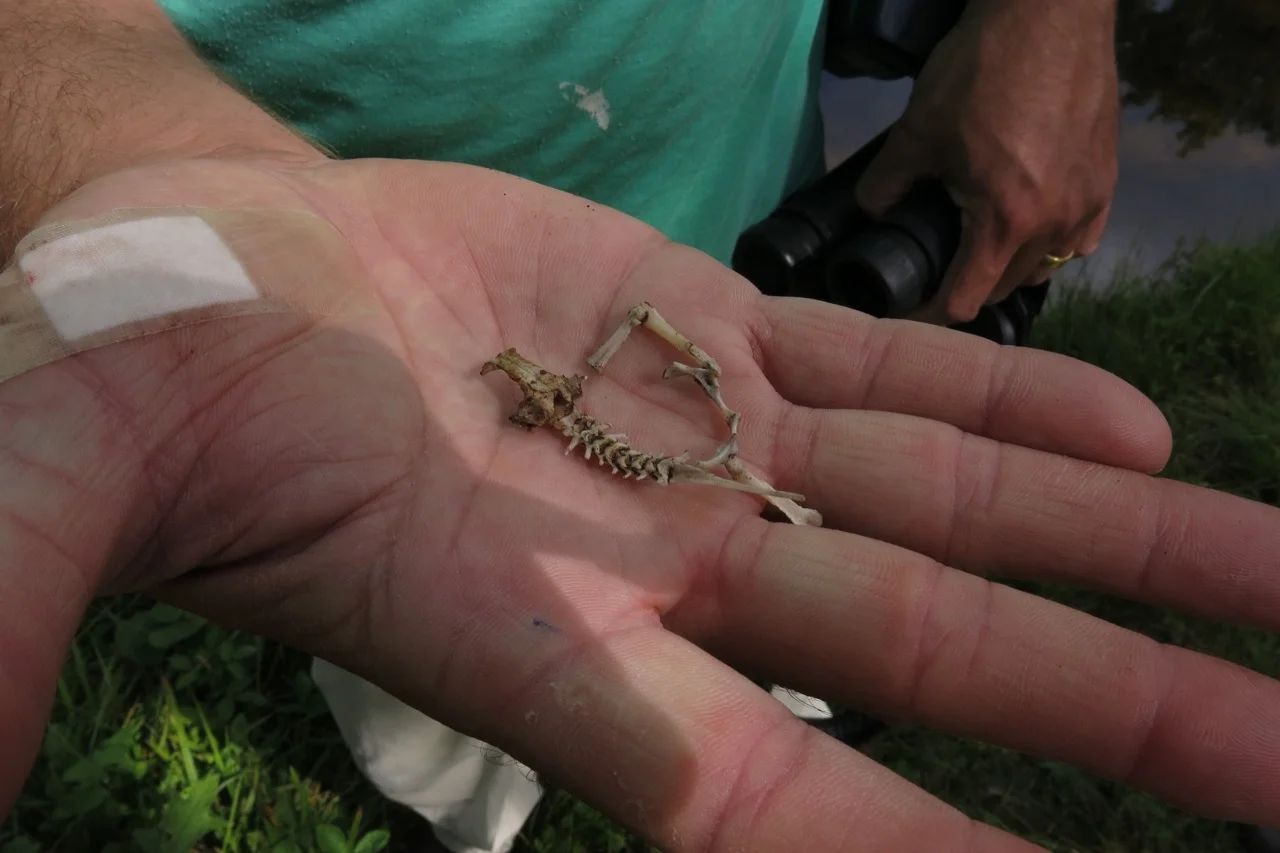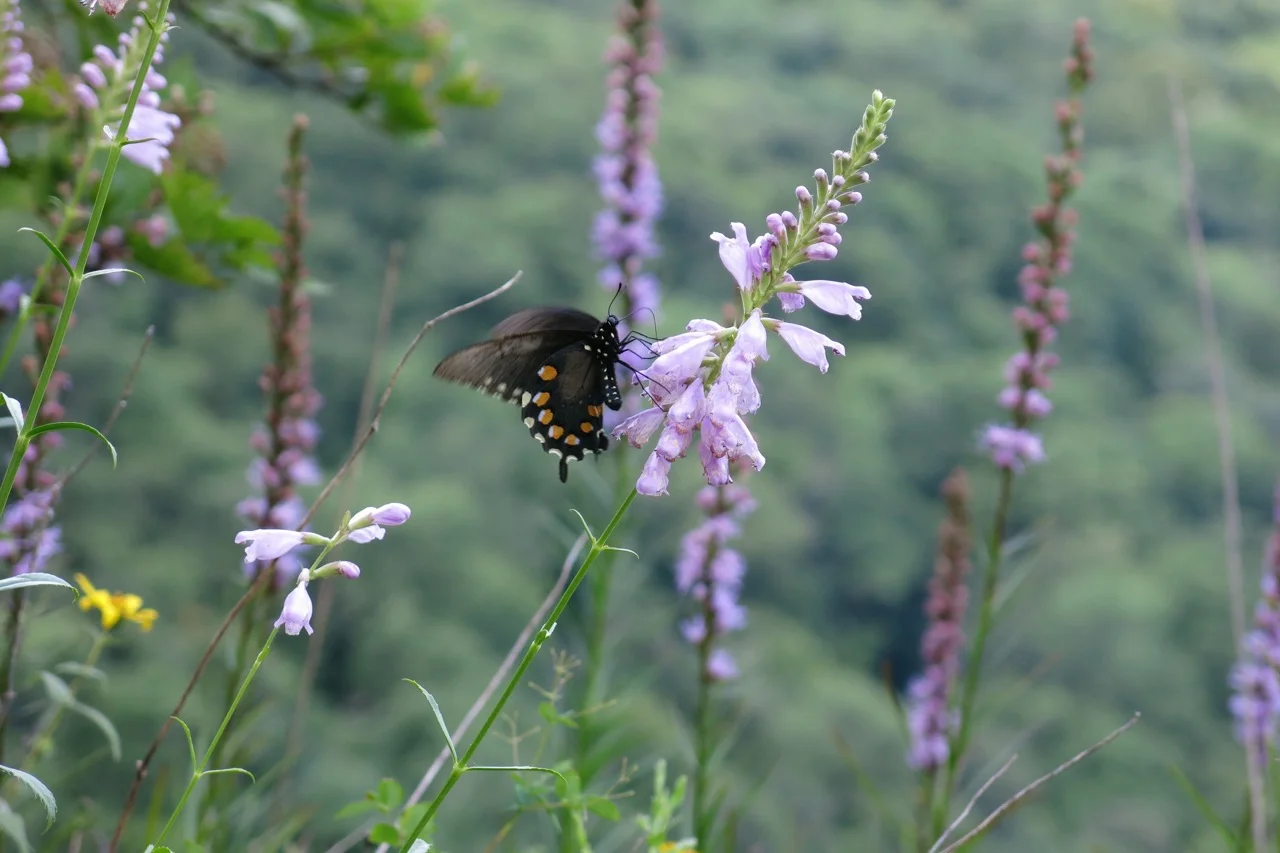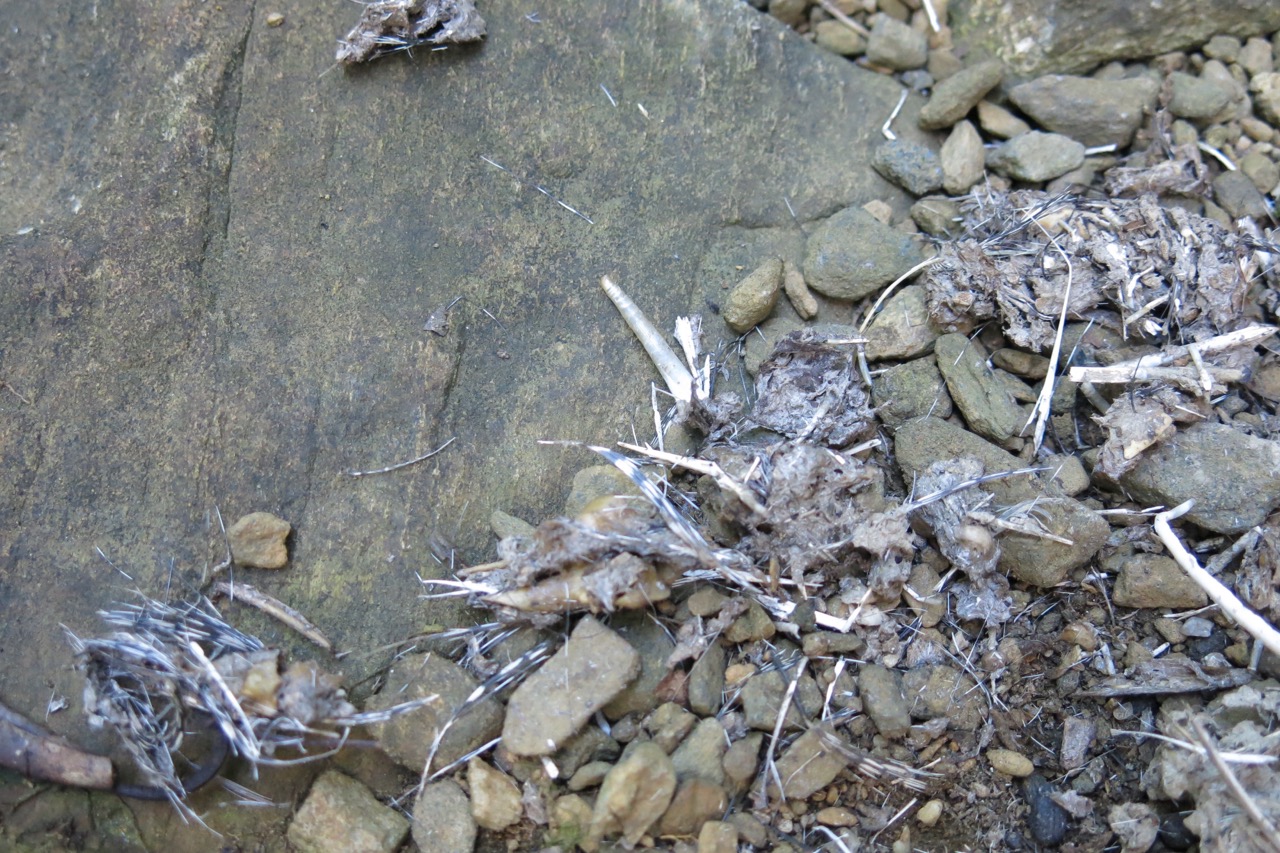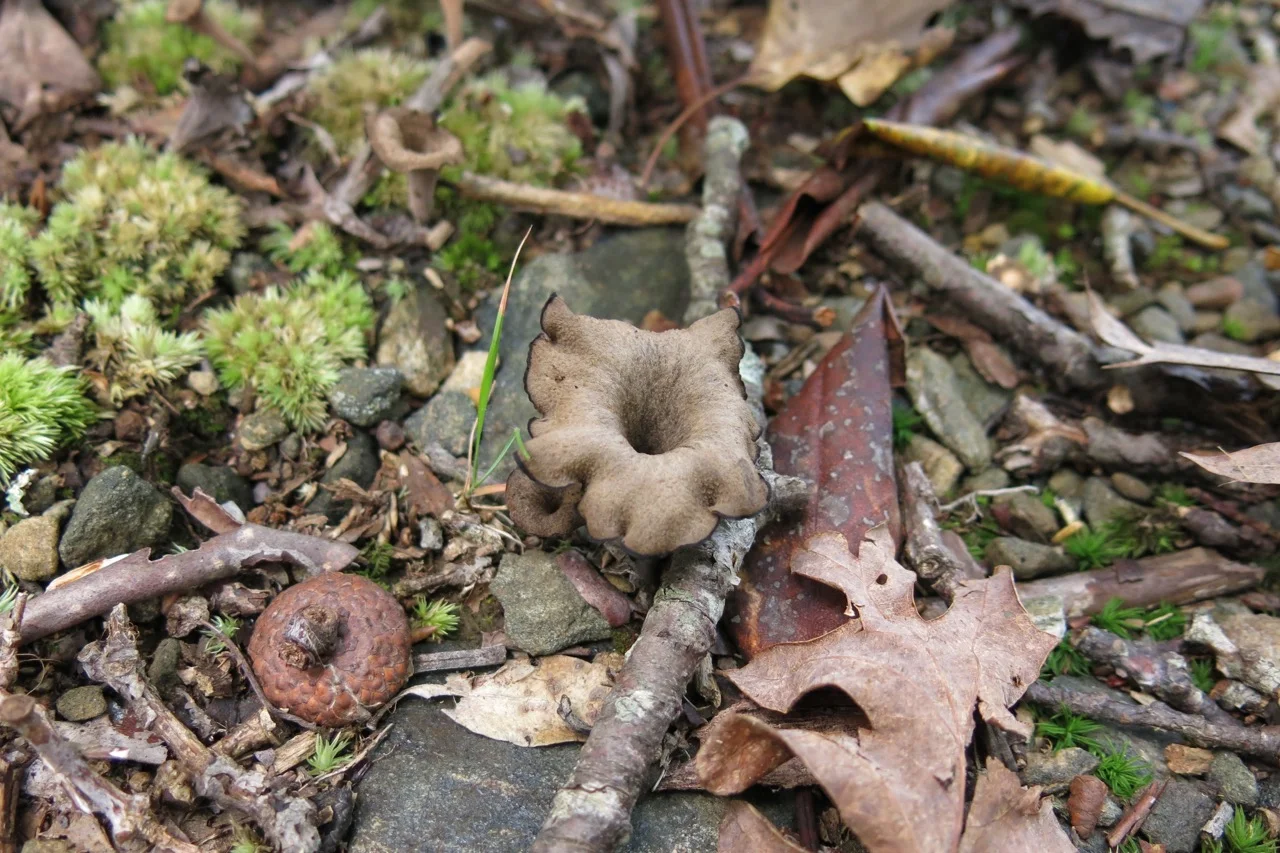Doug Monroe, Naturalist for the Bluff Mountain Nature Preserve, guided an eager group of individuals on a special hike through the Nature Conservancy property as part of the Blue Ridge Expeditions Program.
Naturalist Doug Munroe
Bluff Mountain Nature Preserve is part of the Amphibolite Mountains that are a chain of mountains made up of very hard metamorphic rocks that resists erosion. A mineral-rich rock type called amphibolite gneiss underpins the peaks in the Amphibolite Mountains, yielding a more neutral soil than typically found in the mountains and feeding a rich diversity of plant life.
Within the Preserve, there are 11 different ecological habitats with over 700 species of flora that sprout from varying geologic features and slope aspects. In a relative short distance, a little less than three miles, we passed through all habitats each with unique species.
The trailhead began at about 4,300 feet in elevation. We traveled through a forest of primarily sugar maples, a species of tree that flourishes in this area due to the pH of the soil. Interestingly, there are no heaths (laurels, rhododendrons, etc.) in this area for the same reason. The plants in this section are herbaceous consisting of nettles, deciduous holly, bellflower and native impatiens (jewelweed).
As the elevation increases, the rhododendrons (heaths) appear along with an occasional blackberry who has managed to pop up in a spot of sunlight that has made it through the canopy. The dominant tree species changes to red and white oaks. These trees are twisted and stunted due to the extreme weather conditions on this section of the mountain. The gnarled trees were no good for logging leaving this forest preserved with scattered old growth.
Continuing on, at about 4,500 feet, we reach the meadow. We look upon the meadow, a part of the fen community, that is full of spurge, liatris and false foxglove. It scatters the field with purples and yellows. The Nature Conservancy maintains this area annually by a controlled burn to protect the fen community from the invasive red maple. It is also mowed to control the oak trees that are unaffected by the burn. These methods maintain the fen community and its unique species.
Mixed hardwoods and heaths follow the meadow and we continue on to an old growth forest. Like a sentry, a beautiful majestic sugar maple that exceeds 300 years stands by the trail. We momentarily stand at attention and admire its tenacity and perseverance.
Perkins Rock, Ashe County, NC
Reaching Perkins Rock, we bathed in the warmth of the sun at an elevation of 4,710 feet. As with most peaks, bluffs and knobs of the Blue Ridge at this elevation, it is hard to escape wind. We were privileged to sit upon this rock in the absence of even a breeze. The weather and views were spectacular. After once again traveling through the old growth forest to mixed hardwoods, we begin to see a mingling of hemlocks. Taking a side trail towards the bluff (the mountain’s namesake), we approach a rock ledge that looks down upon a lovely waterfall 300 feet below us. This makes our guide nervous so, one at a time, we are allowed to peer over the edge with our bellies on the ground. There are lots of beautiful obedient plants along the ledge. We return to the hemlock forest, home to the oldest known Carolina hemlock in the world. Core samples of neighboring trees were taken to determine the age of the hemlocks in this forest, however this oldest of the Carolina hemlock (as determined by its sheer size) was not sampled due to potential damage that could arise from such sampling.
Leaving the hemlocks, we enter the mesic glyn (glade). This is an area of thin, moist, acidic soil atop rock. It is home to special lichens, mosses and low shrubs and is particularly sensitive to foot traffic. We saw teaberry, trailing arbutus, lady slippers and reindeer moss to name just a few of the species.
And finally an unbelievable two acre fen formed by a bowl in the amphibolite bedrock, one of only two in the Southern Appalachians. A fen is a type of wetland. Similar to bogs, a fen is a mire and is usually fed by mineral rich surface water or groundwater. It is quite unique and hosts several special species such as grass of parnassus, canada burnet, sundew and indian paintbrush.
Other interesting findings throughout the hike included multiple red efts, bobcat scat, poor man’s truffles, numerous pipevine swallowtails and a pair of beautiful cedar waxwings. It was an amazing day of exploration and discovery.
*photo credits to Susan McClelland and Lisa Benish


